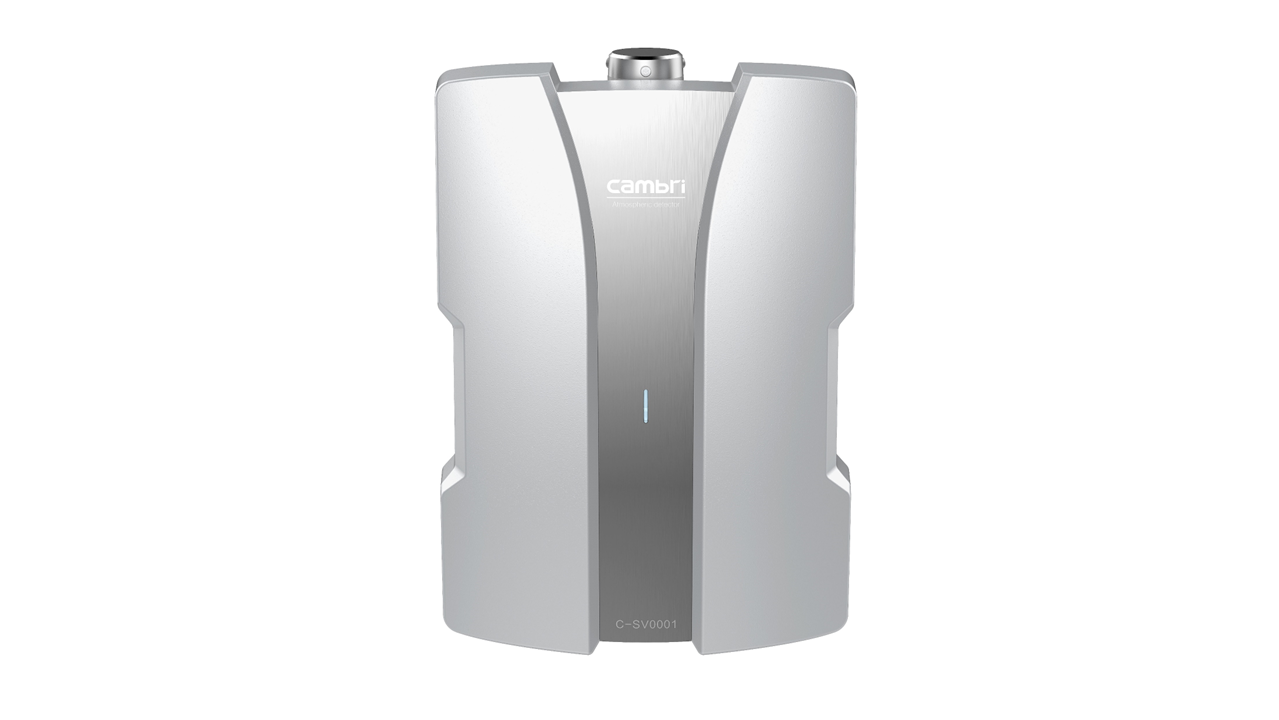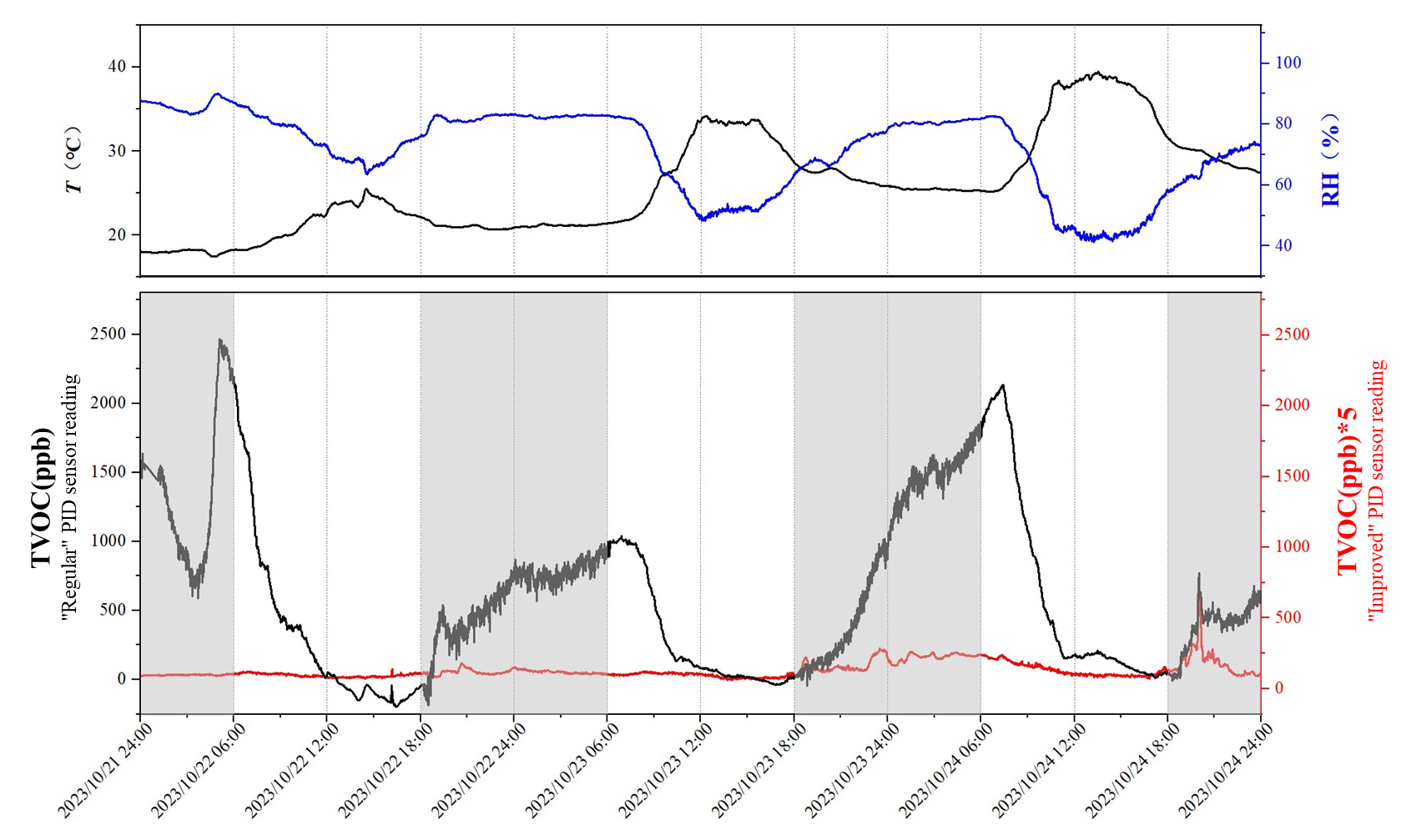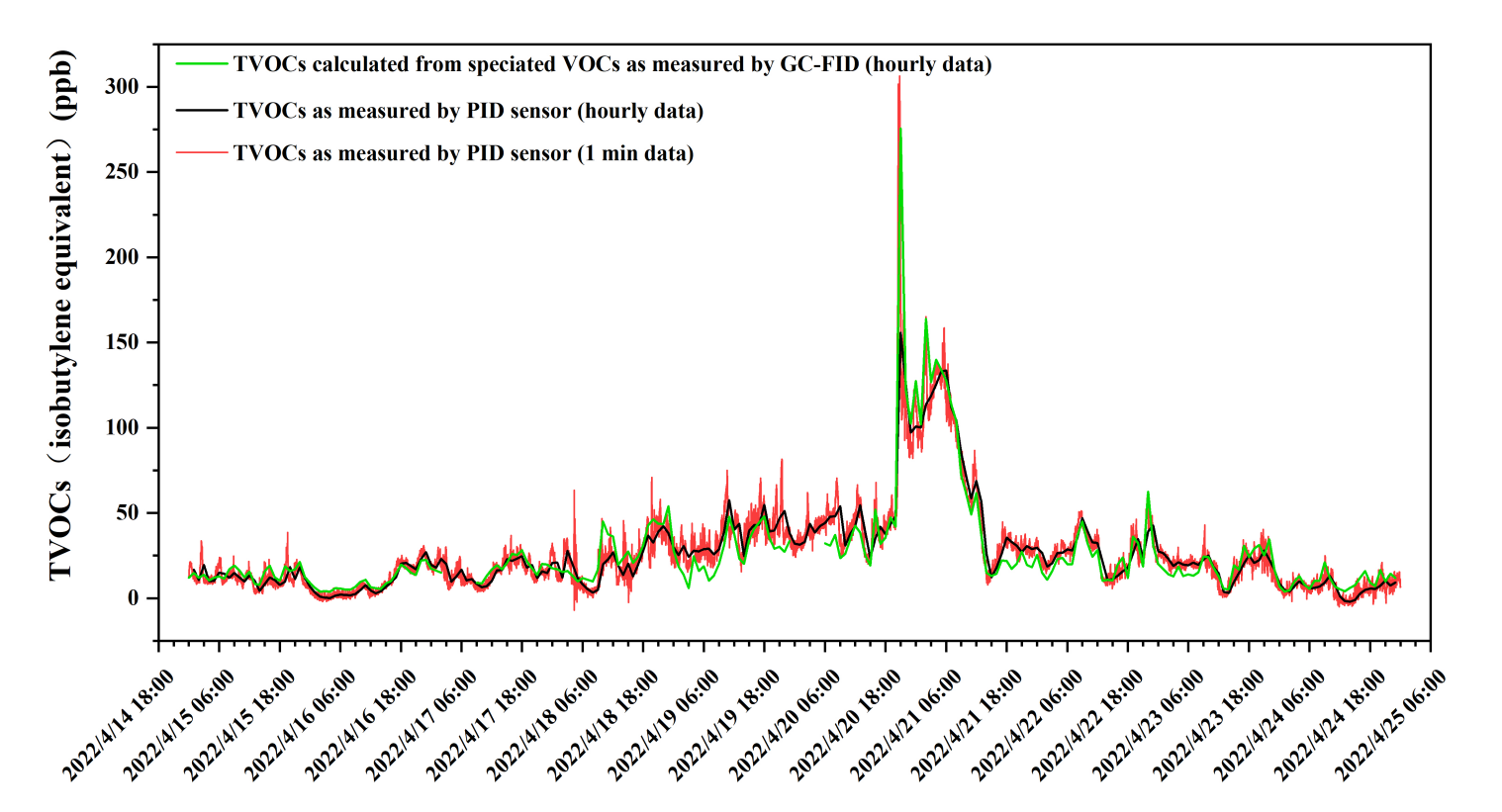
- Product Parameters
- Product Quality Control
- Product Advantages

Photoionization TVOC Sensor

● Owing to their low noises, TVOC sensors based on the photoionization detection (PID) can have superior sensitivities with their measurement precision reaching down to 1 ppb or lower levels. However, in the field environment, especially that with high relative humidities, raw signals of this type of sensors are often T and RH induced drifts rather than that from VOC photoionization - this is best shown by the grey curve corresponding to the raw signal readings of the "ordinary" PID sensor in the above lower figure, most notably at RH > 80% when the sensor output voltage rose simultaneously and non-linearly with the increase of RH;
● Our patented technique however suppresses the T and RH induced sensor drifts, thereby decoupling the trend of the sensor raw reading and those of T and RH, as shown by the red curver in the above lower figure for the "modified" TVOC sensor;

Furthermore, we compared the TVOC concentration (isobutylene equivalent) measured by the photoionization detector with the weighted concentration of VOC components based on gas chromatography-flame ionization detector (GC-FID) (calculated according to the response coefficients of VOCs to 10.6 eV photoionization, PID Correction Factors), and the results are shown in the figure above.
●Both methods show good consistency in both the low concentration range (10-20 ppb) and the high pollution range (>200 ppb), indicating that the PID sensor can accurately monitor TVOC concentrations in varying outdoor temperature and RH conditions;
● We believe it is fair to claim that measurement results by the PID sensors have effectively eliminated the impacts of T and RH, and therefore can avoid the unrealistic, high reading values under high-humidity conditions. Meanwhile, sensor measurements have higher temporal resolution and can capture VOC concentration change in seconds;
● Our selected sensors have sensitivity loss of <20% after >1 year continous running in the moderately polluted industrial park environment (peak TVOC concentration >400 ppb), suggesting that the sensors are resistant towards pollution and have stable UV lamp outputs across this time scale.
Scalability
Capable of simultaneously measuring a variety of environmental parameter indicators such as PM1, PM2.5, PM10, SO2, NO2, NO, O3, CO, TVOC, wind speed, wind direction, temperature, humidity, atmospheric pressure, illuminance, rainfall, and radiation with 24-hour continuous, high temporal resolution, and accurate measurement. It is expandable to monitor CO2 and noise levels.
Technological Advancement
The device achieves remote upgrades through automatic firmware updates and parameter changes, reducing the workload of operation and maintenance.
In the absence of network signals, the device can back up data for at least over a year: the backed-up data can be resumed and transmitted to the server after the wireless signal is restored.
Comprehensive with an ecological environment big data management platform, enabling intelligent data presentation and analysis.
Wirelessly transmitted to the data platform, and can be displayed and applied on various smart devices.
